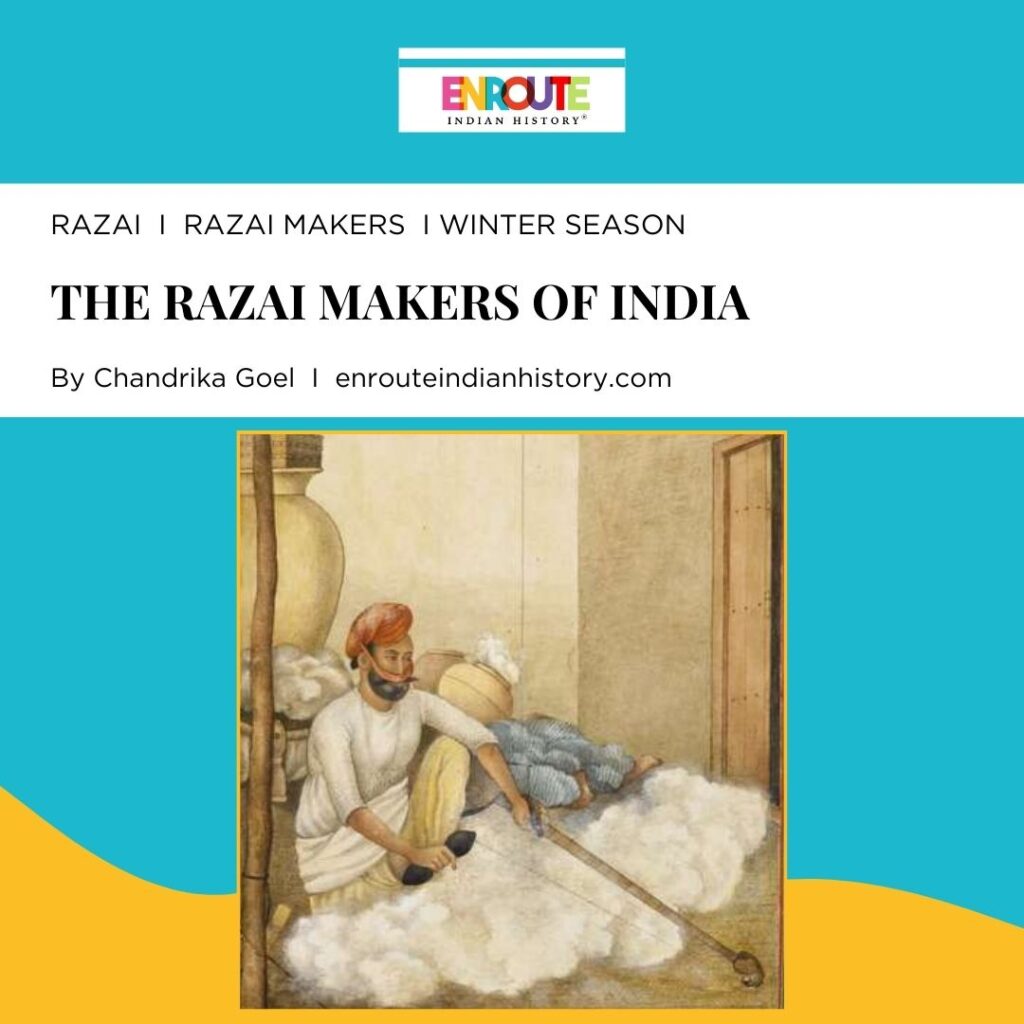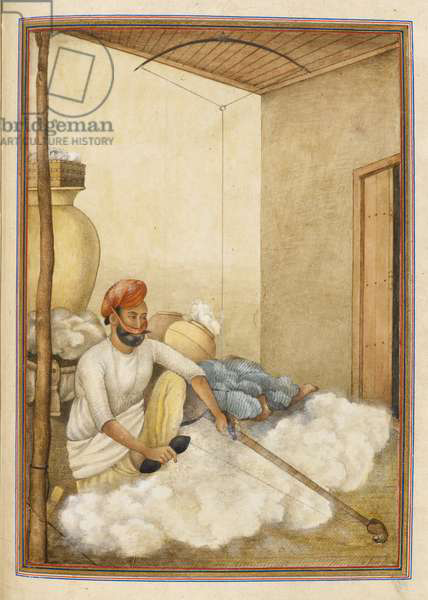
Winters are around the corners , the demand for soft and cosy razais has increased. A razai Or Arzaai, is an integral part of the Indian winters. Nothing sounds better than curling up in a warm razai with a steaming mug of coffee or chai to beat the onslaught of nipping cold. In India, the tradition of bringing out razais and getting them fluffed up is very old. Earlier the razais were made up by local artisans of the town. These warm quilts usually have a covering of cotton, silk or velvet which is then stuffed with cotton wool. They provide a great deal of warmth in very cold conditions due to the insulating effects of large amount of air trapped in the cotton wool. However, the cotton wool clumps over time which results in thinning of the razai and driving the trapped air out, making the razai less effective against the cold. Therefore families go to a ‘dhuniya’ or a razai carder to get the razai carded. These carders are professionally adept and are seasonally employed in this activity. The process of carding a razai is simple. The clumpy cotton wool is taken out of it’s cover and is carder by the help of a ‘dhunki’ which is a bowed instrument with a string. ‘Dhunki’ has a distinctive sound when its string is plucked and it usually symbolizes the onset of winters in the rural areas. After carding, the fluffy cotton wool is refilled into the razai cover. Carding helps the wool to spread and trapping air to create insulation.

A duniya with dhunki
India has a selection of best razai makers located in different parts of the country. For instance, Moradabad and Kashmir. But the best type of razai makers out of all the states and cities can be found the Pink city or Jaipur in Rajasthan.

A jaipuri razai with beautiful foliage print
The origin of Jaipuri razais is documented somewhere in the 16th century, when people created handmade blankets using layers of fabric stuffed with cotton to handle the harsh desert winters of Rajasthan. The jaipuri razais rose to prominence under the Mughals and therefore a lot of Mughal influence can be seen in the patterns of these razais. The Mughal butta Or floral pattern is very common in a Jaipuri razai. Because of their warmth and coziness, Jaipuri rugs are in high demand throughout the winter months in Delhi, Bangalore, and other Indian cities, particularly those in the north where low temperatures are typical for the majority of the year. These razais are also useful for staying warm and comfortable during a restful night’s sleep in areas with mild temperatures.

Mughal butta
DIFFERENT KINDS OF RAZAIS
Razai producers (Razai Makers) in India work in different styles, each with its own exceptional interpretation of the art. The most widely recognized sort of Razai is the hand-weaved assortment, which highlights wonderful lines and examples worked into the texture. These Razais are frequently produced using cotton or silk, and the weaving should be possible in different varieties.The block-printed variant of Razai is another kind that is in demand. Hand-carved wooden blocks are used to print patterns and designs onto fabric to create these Razais. Printed on cotton or linen, block-printed razais might have simple or complex designs, depending on the artist’s style.The hand-loomed version of Razai is the third kind. These Razais are woven using a loom, and a range of colours are frequently used to create the motifs. Hand-loomed Razais can be plain or patterned, and they are often made of wool or cotton.
RAZAIS AND INDIAN HOUSEHOLD
A fight over razai? Oh yes. In an Indian household, everyone has a razai reserved for themselves. Each member has a different colour and even a different pattern for themselves. This also symbolizes the individuality of a person and even the taste of a person.
MAINTENANCE OF A RAZAI
Carding is surely the most important step of maintaining these razais but there are so many other steps for the same. One of them is putting the blanket in the sunlight to sterilize it and do away with the odour of mildew that may have started coming from them. But it is suggested to not leave the razais in the sunlight for a longer period of time as it may damage the colours and the fabric of it. People also protect their razais from fibre insects and moths by tossing a few mothballs in the store while storing the winter clothes.
One exquisite and distinctive aspect of Indian culture is the razai.It would surely lend a touch of elegance to any home and is a symbol of coziness and warmth.India’s Razai makers are skilled craftspeople who have spent decades honing their trade.Their goods are not only exquisite but also incredibly high-quality, long lasting, and robust.By purchasing a Razai, you are promoting both the centuries-old Indian tradition of manufacturing Razais and the craftsman who created it.
BIBLIOGRAPHY
- https://www.tealandfox.com/blogs/teal-and-fox-blog-posts/history-of-the-jaipur-razais
- https://jaipurfabric.medium.com/why-do-you-need-to-know-about-jaipuri-razai-37a5e2756d53
- https://www.craftmark.org
IMAGE SOURCES
- https://pin.it/4iRJLdl
- https://www.bridgemanimages.com/en/noartistknown/a-cotton-dresser-dhuniya-or-pamjara-synonyms-for-the-caste-of-cotton-dressers-represented-by-a/nomedium/asset/3306861
- https://m.facebook.com/story.php?story_fbid=pfbid02V685wZwfzcZmawWNP8VQnFZsZpkoEqh5QJ9yVkZcczXve1Veqzu4EEPmNLAHEp9Xl&id=110581498958923
- https://pin.it/zA7CwsT
- https://pin.it/5bULwov
- https://pin.it/3cHA3A2





















